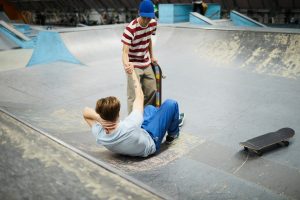
For many students—particularly those that are historically underserved—the summer break from learning perpetuates inequitable achievement gaps, according to an overview of current research studies that examined K-8 student progress during a typical school year (non pandemic) and over the summer released by NWEA .

The research reveals important information about the degree to which being in school reduces achievement gaps and points to the importance of high-quality summer programming in supporting student success.
“This new study underscores both the urgency and need to invest in interventions that support the academic recovery of English learners. Even before the pandemic, multi-lingual learners lost more ground than their peers during the summer when they were out of school,” said Eric Rodriguez, SVP of Policy and Advocacy at UnidosUS. “After the last two years of interrupted learning for all students, it is more crucial than ever to target significant resources to support retaining and accelerating academic progress and learning for English learners during the summer. Summer support should include bilingual programming that combines academic and enrichment activities staffed with specialists to provide specific language development support and appropriate materials for English learners.”
The research used MAP Growth assessment data and revealed that while English learners, students with disabilities, and rural students make gains at rates equal to or faster than their grade-level peers during the school year, these students also experience greater learning loss in the summer, leading to persistent achievement gaps.
“We have long known the impact of the summer slide on student learning; however, this data gives us a deeper look into just how critical high-quality summer opportunities are for many of our underserved students,” said Deborah Delisle, CEO of All4Ed, formerly the Alliance for Excellent Education. “This information demonstrates that our system is effective at educating our students during the school year, and it is a call to action for states and districts on how to target summer programming so that all students can excel in school and beyond. Our children deserve nothing less.”
Key points include:
- English Learners (ELs) — A research study looked at achievement and growth for K – 4 for ELs. It showed that ELs had lower test scores than their non-EL peers through their elementary years, but they also made academic growth similar to or at greater levels as their non-EL peers. However, the student group that was consistently identified as needing EL services tended to lose more ground over the summer than their non-EL peers or their multilingual peers who were ELs at some point but not consistently through K-4.
- Rural Students — In a study of K-8 students nationwide, rural students came into kindergarten with higher achievement levels in math and reading than their non-rural peers; but by the end of third grade non-rural students consistently outperformed those from rural communities across the grades. Rural students grow at slightly faster rates in math and reading than other students when school is in session, but lose more ground almost every summer.
- Students with Disabilities — In a study of K-4 students nationwide, students with disabilities enter kindergarten behind their peers in reading and math, but go on to make gains at similar or higher rates than their peers during some school years. However, students with disabilities lose more ground every summer, which contributes to widening disparities in achievement.
“Our research analysis revealed reasons for both optimism and concern. While the findings disrupt some long-held deficit-based thinking about some of these student groups, they also demonstrate the disproportionate impact that learning interruptions have on their achievement in the long-term, making high quality summer learning opportunities and other interventions critical,” said Lindsay Dworkin, VP of Policy and Advocacy at NWEA. “Taken collectively, these studies can help education leaders and policymakers identify interventions needed for these student groups to help address the inequitable learning patterns in U.S. public schools.”
Previous NWEA assessment data show that all students started this school year behind where they would be in a typical year and that historically marginalized groups were most severely impacted. Hispanic, American Indian and Alaska Native (AIAN), and Black students had much bigger declines in achievement than Asian American and White students.
NWEA researchers will also continue to conduct research into learning patterns that occur during the school year and over the summer and hope that new data will show a narrowing of gaps and more equitable learning conditions for all students. Additionally, NWEA researchers are partnering with CALDER at American Institutes of Research (AIR) and the Center of Education Policy and Research at Harvard to support a group of districts in determining how interventions are supporting COVID recovery.
“With the school year soon coming to an end, we can all look to summer as the perfect time to provide additional quality learning opportunities for students impacted by the pandemic. To ensure these opportunities are engaging and successful, states need actionable research on effective strategies that leverage afterschool, summer learning, and community partners,” said Paolo DeMaria, NASBE president and CEO. “This summer learning research brief can inform state boards about what works to support students in high-quality summer programs that sustain positive gains made during the school year. High quality summer programs coupled with relevant ongoing evaluation will help unlock the tools we need to reduce summer learning loss and continue to accelerate student learning so each and every student thrives.”







